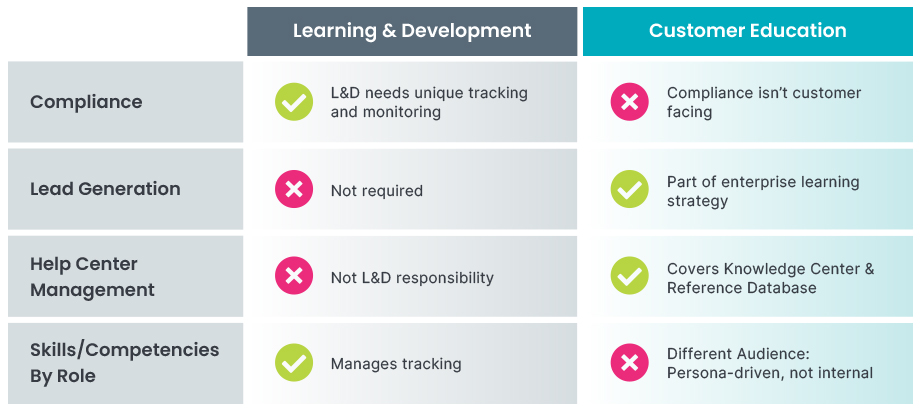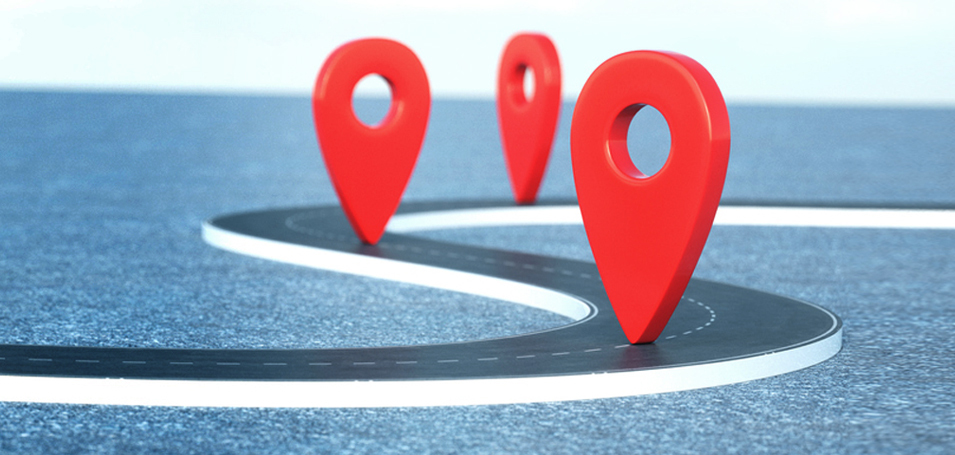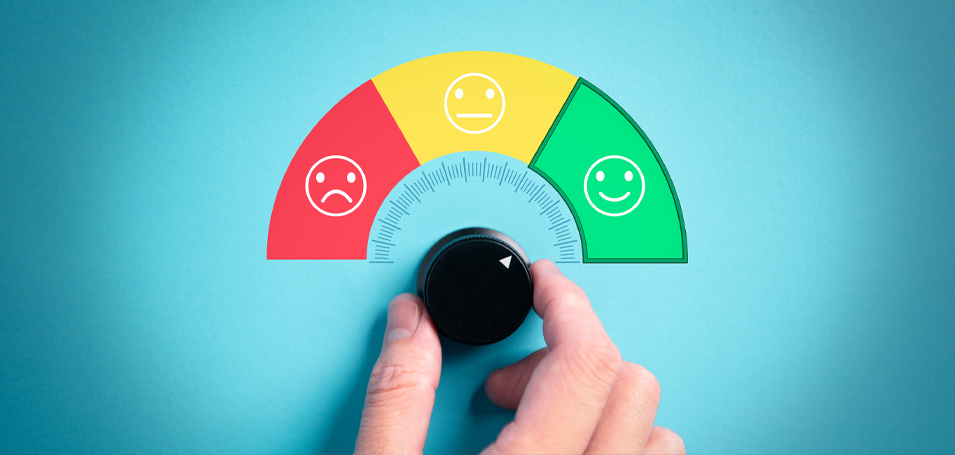Does this sound familiar? You’re describing your role in Customer Education, and someone asks if you work with – or in – Learning and Development (L&D). It’s understandable – there are so many similarities between the work in these departments. But there are key differences. And, as an L&D professional for almost 10 years, I’ve noticed ways these teams can complement and boost one another. Keep reading so you don’t have to wait a decade to act on these insights.
Comparing L&D and Customer Education
The biggest difference, of course, between Customer Education and L&D is their primary audiences. L&D focuses on internal employees, providing content, learning experiences, and development opportunities focused on upskilling and growth. Customer Education, however, has a primary focus on customers and prospects to set them up for success. These programs often provide benefits to an internal team. For example, reducing tickets and customer support hours, but the primary learning audience is the customer and prospect.
However, there are often more similarities between these teams than we realize. Both teams are focused on providing quality learning experiences, and often the content has some overlap. Both internal and external audiences need to understand the product or solution, their industry, thought leadership, and common customer problems. Add to that the common ask of both prospects and new employees, and both teams are asking the same question: “Who are you, and why are you different from competitors?”
How L&D Can Boost Customer Education’s Impact
As you grow and expand your Customer Education team, consider tapping into L&D to grow momentum toward a culture of learning. Use this overlap to your advantage – ask if you can work together on projects that meet your mutual needs. In my experience, this won’t be a hard sell. I have never met anyone in the L&D space who is not interested in expanding their impact.
It’s also important to remember where there is not overlap. The difference between the audiences of each program creates potential differences in needs. But that shouldn’t stop you: for example, you could build a piece of mutual content with separate resources for internal or external audiences. Take time to figure out the differing needs of each audience. Then, build a plan to identify where you need to work together and where those responsibilities separate.

How To Build A Plan for Overlap with L&D
If you’re part of a newer Customer Education team, I’d advise that you start by asking, “Who are we?”. As an L&D Manager, I too am answering this question from the beginning of a new employee’s tenure to any new program launch. If we, as education teams, are sharing the same message, we might as well build mutual content.
Once this question is answered, don’t hesitate to loop in anyone in Sales Enablement or Partnership programs. They need the value of these education programs, too, and can provide some of the strongest answers for that second (equally important) question, “What makes us different from competitors?”
Collaborating to build a program can be painful at times, and often slower than if one team spearheaded it. But, working together allows you to build up inertia to allow for shared instructional design resources, tools, media teams, and other things that create world-class learning experiences. And, after the first project is done, you’ve set up a strong foundation. Now, you can expand into other mutual needs, like product and solution training, thought leadership, and other overlaps. We often are small teams, especially in the SaaS world, and all of us benefit from pooling and sharing resources. As long as you approach L&D with a plan for this mutual overlap, you are likely to set up a beneficial partnership that will multiply what both teams can accomplish.



